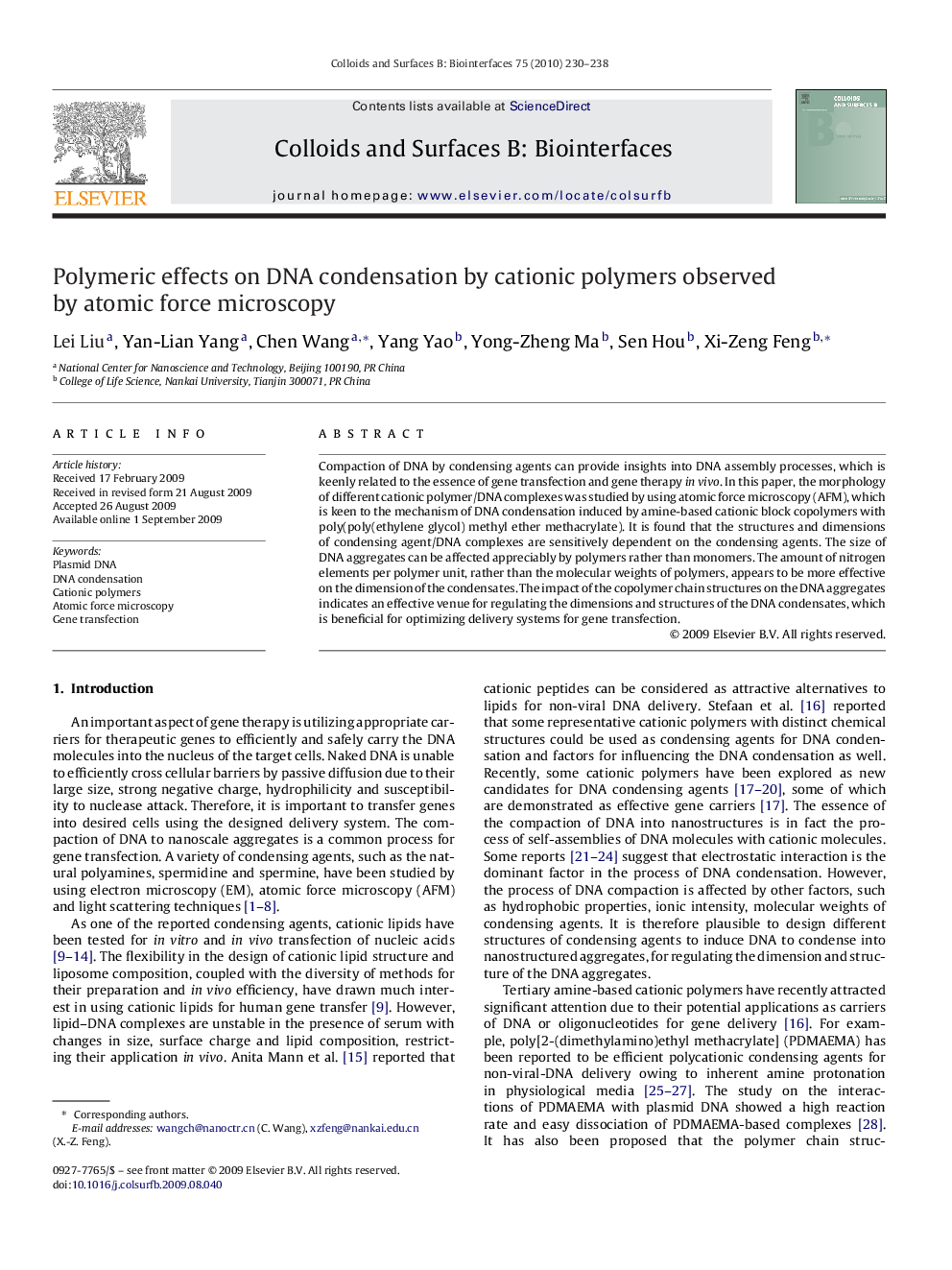| Article ID | Journal | Published Year | Pages | File Type |
|---|---|---|---|---|
| 601962 | Colloids and Surfaces B: Biointerfaces | 2010 | 9 Pages |
Abstract
Compaction of DNA by condensing agents can provide insights into DNA assembly processes, which is keenly related to the essence of gene transfection and gene therapy in vivo. In this paper, the morphology of different cationic polymer/DNA complexes was studied by using atomic force microscopy (AFM), which is keen to the mechanism of DNA condensation induced by amine-based cationic block copolymers with poly(poly(ethylene glycol) methyl ether methacrylate). It is found that the structures and dimensions of condensing agent/DNA complexes are sensitively dependent on the condensing agents. The size of DNA aggregates can be affected appreciably by polymers rather than monomers. The amount of nitrogen elements per polymer unit, rather than the molecular weights of polymers, appears to be more effective on the dimension of the condensates. The impact of the copolymer chain structures on the DNA aggregates indicates an effective venue for regulating the dimensions and structures of the DNA condensates, which is beneficial for optimizing delivery systems for gene transfection.
Related Topics
Physical Sciences and Engineering
Chemical Engineering
Colloid and Surface Chemistry
Authors
Lei Liu, Yan-Lian Yang, Chen Wang, Yang Yao, Yong-Zheng Ma, Sen Hou, Xi-Zeng Feng,
